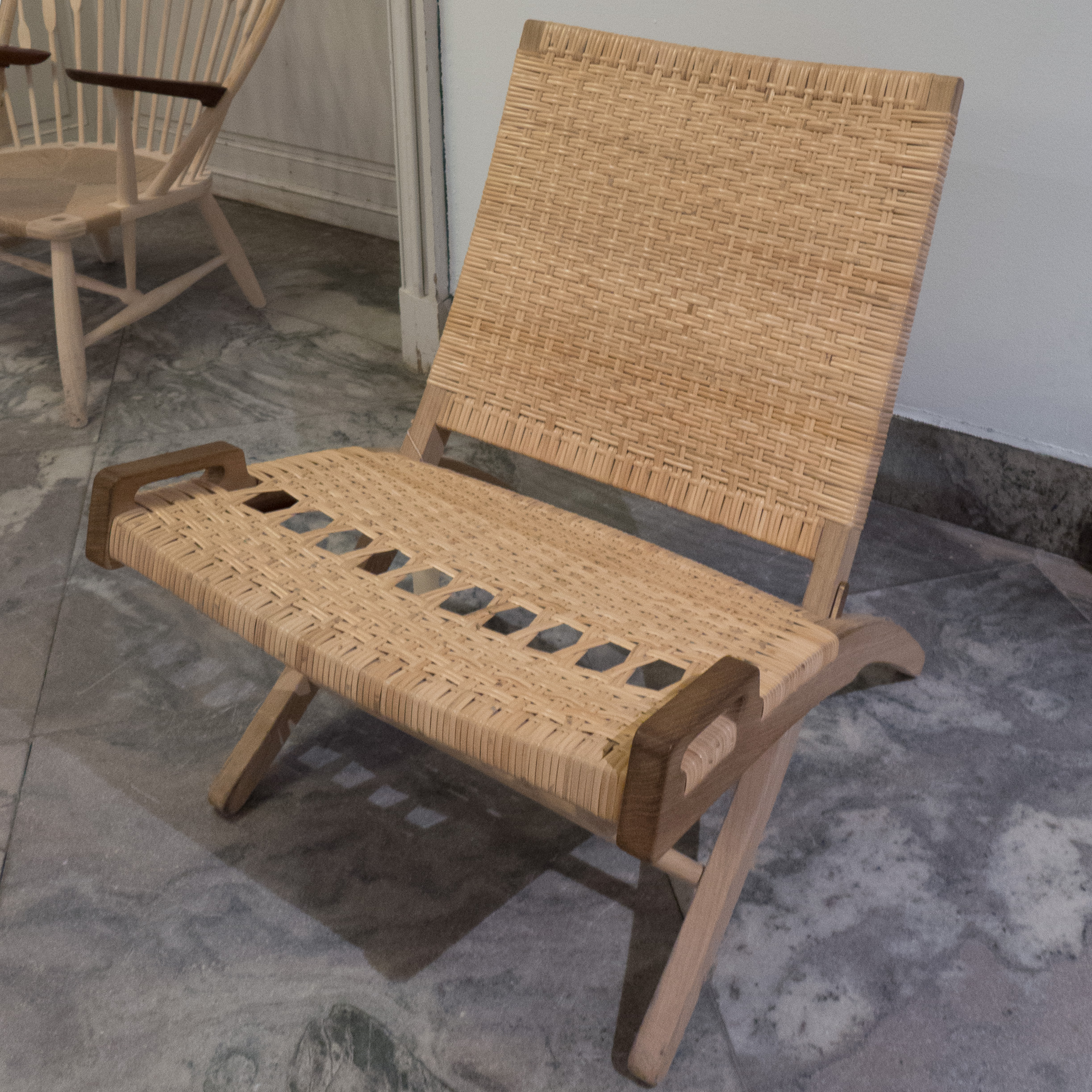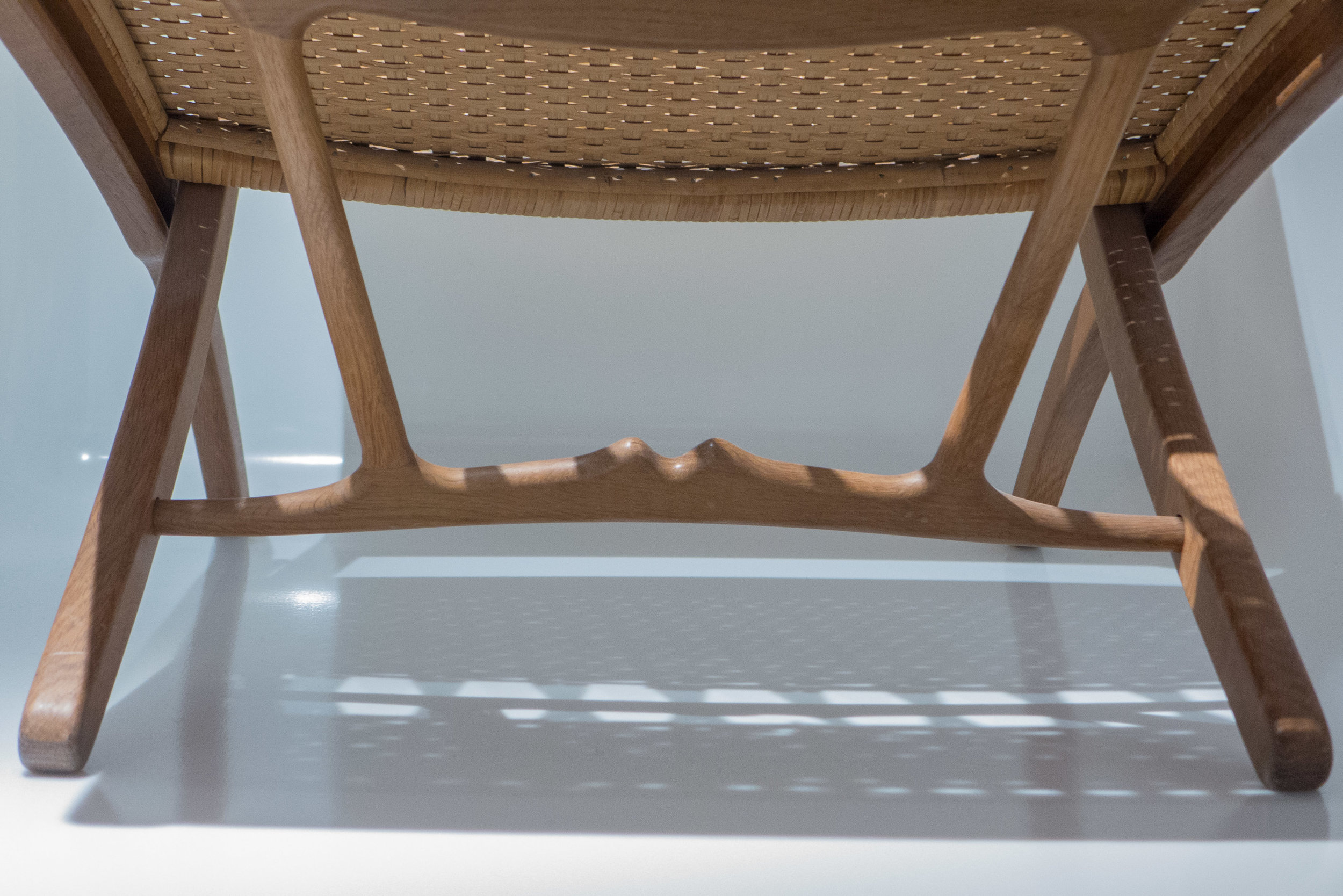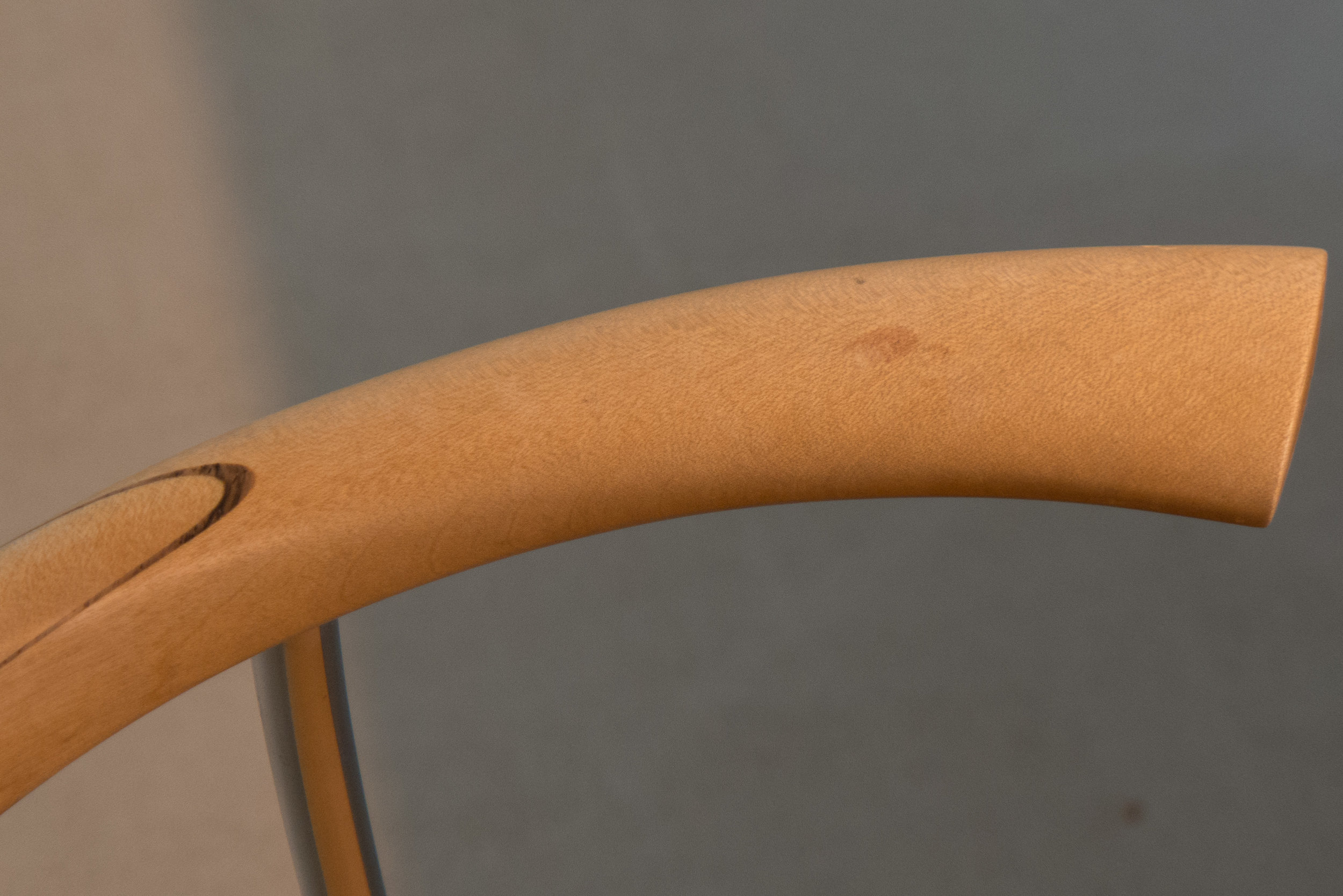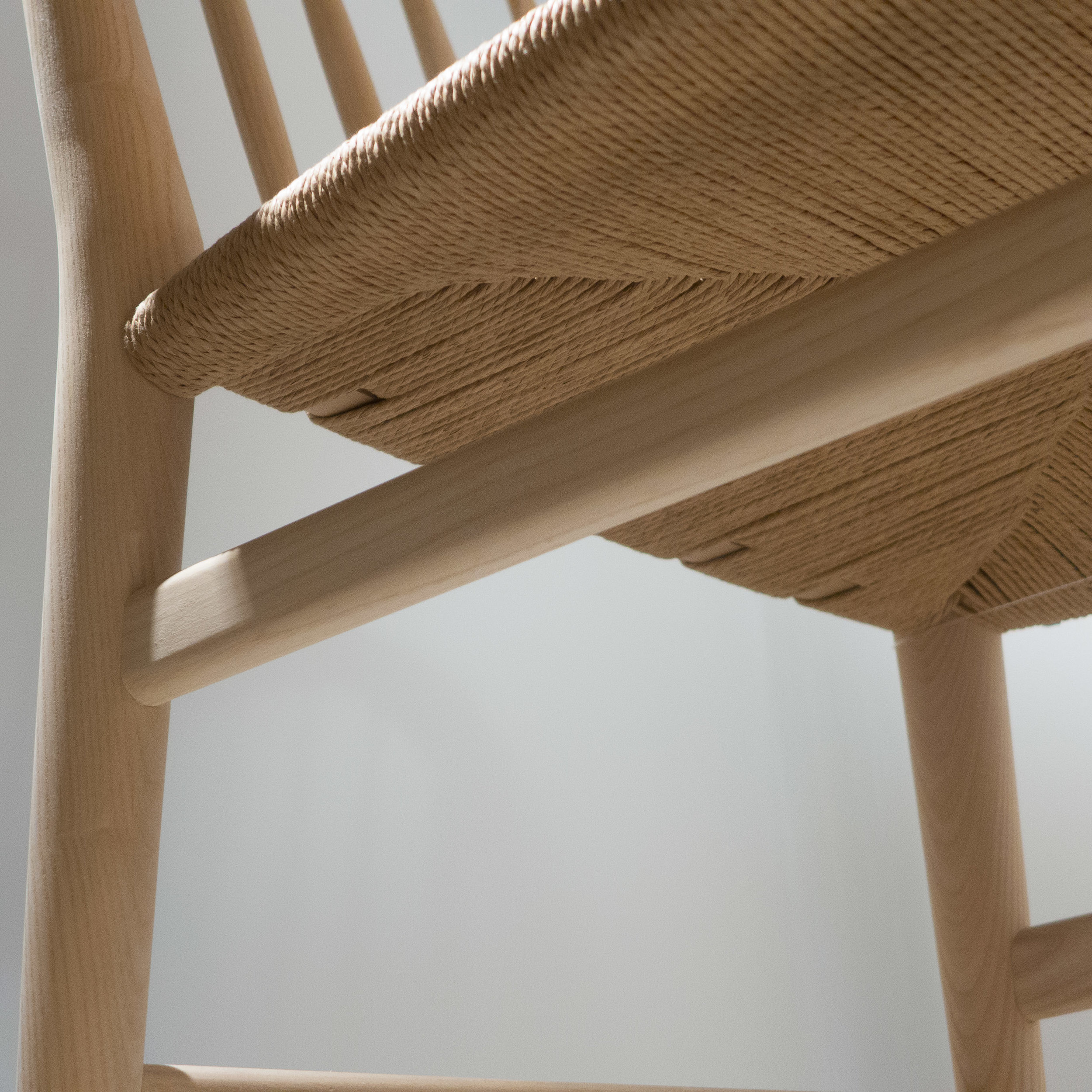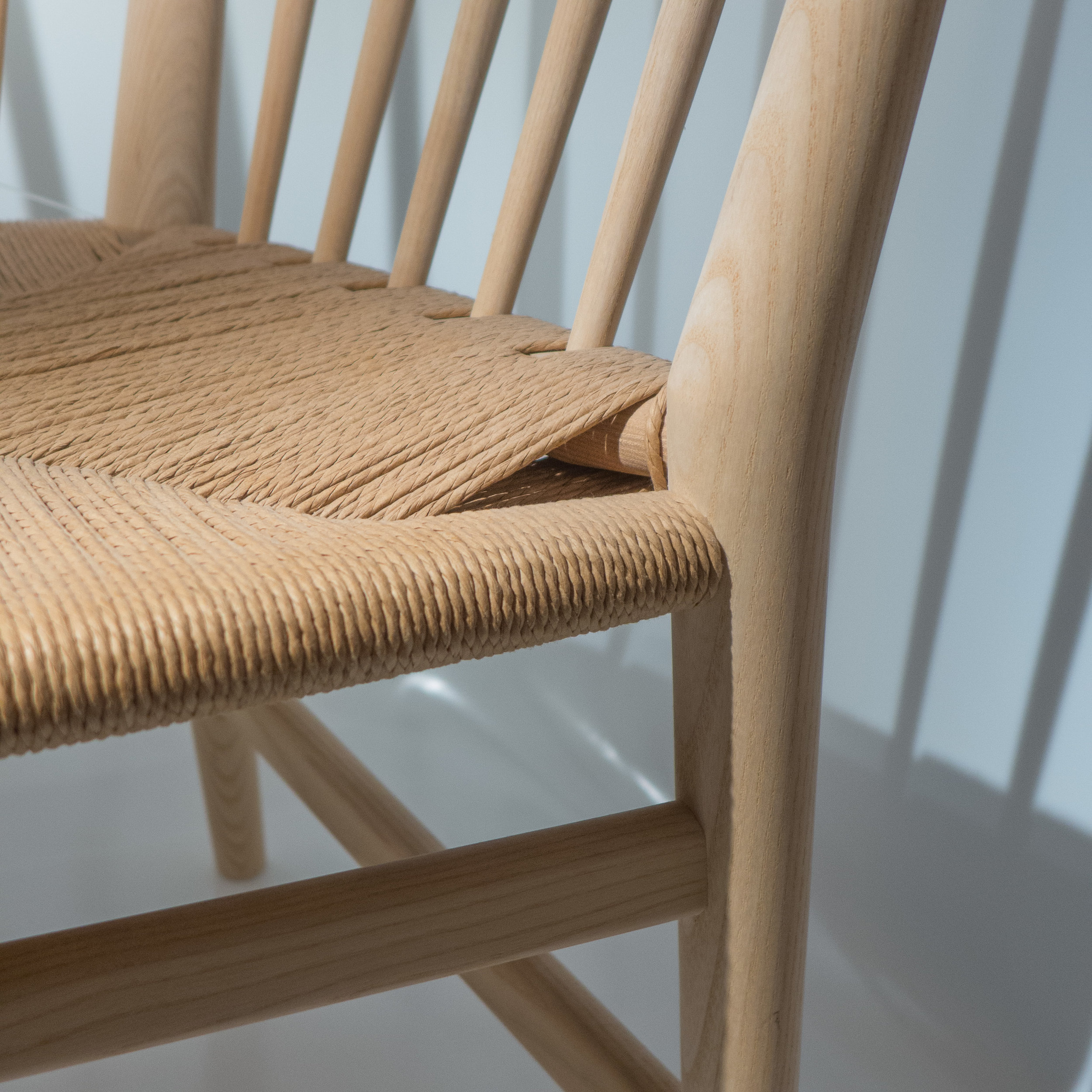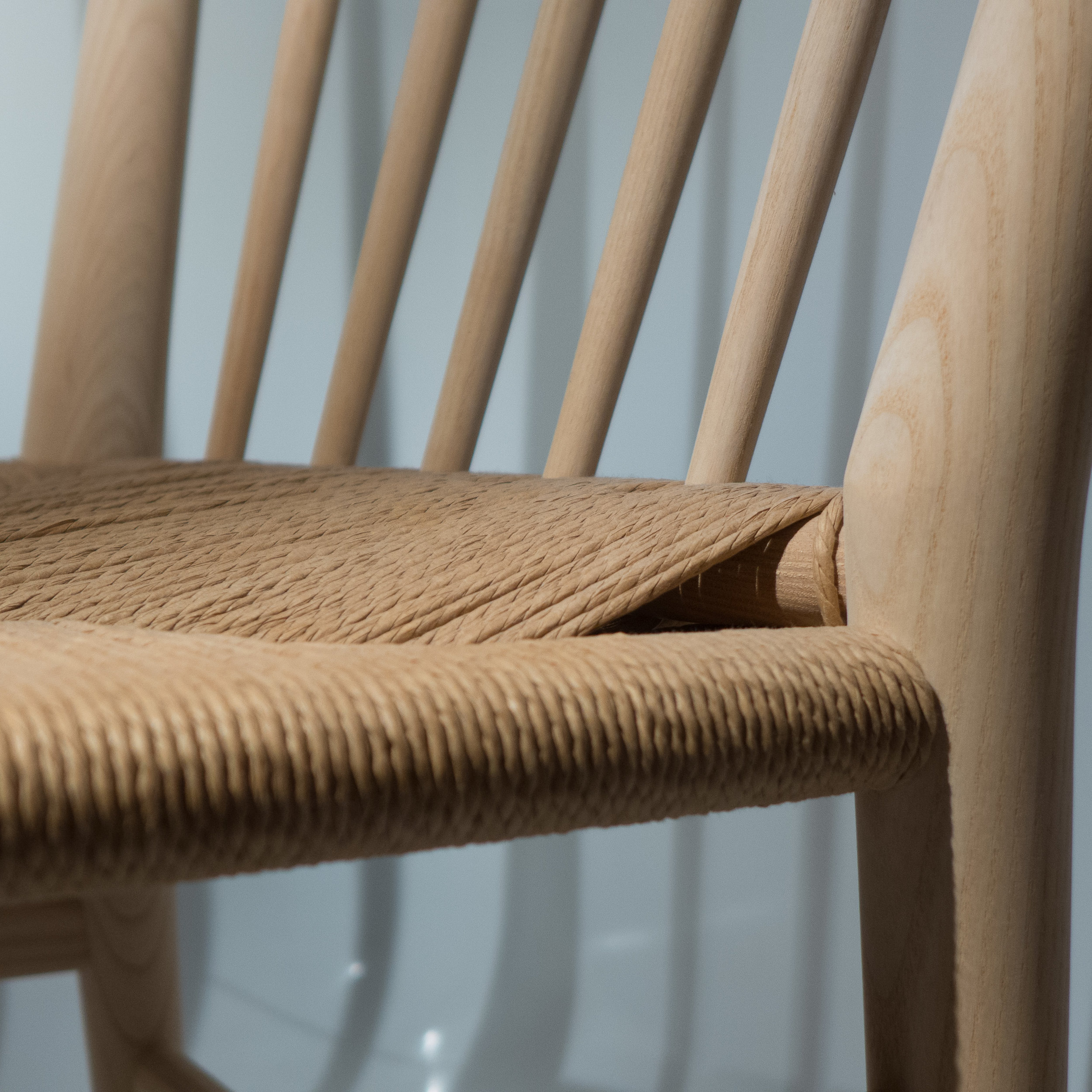The Round Chair was one of the first pieces of furniture that was designed after the second world war for commercial production. Clearly, it was not a cheap factory product but certainly marked a new direction away from the skilled but small workforce found in a cabinetmakers’ workshops and who were producing all high-quality furniture before the war.
In February 1950, the influential American magazine Interiors published an article that showcased work by Finn Juhl, Borge Morgensen and Wegner but it was The Round Chair that was featured on the cover. The Round Chair was selected for the Good Design Exhibition - organised by the Museum of Modern Art in conjunction with The Chicago Merchandise Mart - that ran from November 1952 through to February 1953. That was the second year of the exhibition when the display was arranged or designed by Finn Juhl. ** The price tag on the chair appears to have been $125. ***
The Round Chair featured again in an exhibition in New York in the Georg Jensen store on Fifth Avenue in 1959 that focused on the work of Wegner and although it was the Round Chair that was on the cover of the catalogue it was, curiously, the cane version and with cane around the back so the original JH501.
So, The Round Chair was one of the first important and one of the first commercially successful pieces to be produced in what is now referred to as the classic period for modern Danish furniture but when asked about The Chair, Wegner commented that, personally, he thought that it was his best achievement … “not because of its export success, but because I have been more thorough with it than anything else.”
Many people have written about just how modest, genuinely modest, Hans Wegner was so this statement is revealing. If he says he was thorough then it was almost-certainly a lot of hard work combined with experience and presumably a fair bit of determination. Understanding that is crucial to seeing why the design of this chair is so important. The proportions and the gentle curves of the chair look simple but simple does not mean easy and certainly does not mean basic. So part of being “thorough” was getting those lines and those dimensions and those relationships of the main parts of the chair right. Not perfect - to create an ideal - but right for this particular chair. That is, in part, about compromise … not compromise in the modern sense of doing what you can get away with but compromise in the sense of balancing what is gained or what is lost as elements of the design are changed. Here there are several broader points of compromise or balance or trading off that makes the chair such an important example of how the design process should work. So each part is reduced down … to put it crudely a straight leg with a square cross section could do the same job of supporting the seat and the arm of the chair … but take too much away and the leg looses its strength and the places where joints have to be cut to house the seat frame into the leg are weakened. The choice of wood for this specific design is an important consideration from the start … so the same design could not be made from birch. It is not hyperbole to say that the design reflects what Wegner knew about what good Danish craftsmen could do with good Danish oak … though again most Danes would be too modest to state that in that way. So from the start, the design built on well-established and well understood expertise. The quality is another and a very deliberate compromise although it might seem odd to describe it as a compromise in quality with a chair like this but in fact it was a very successful compromise. Cut quality and it is less likely to survive in commercial use but focus on it having to be a robust chair for the board-room or restaurant and it becomes too expensive and possibly too heavy and solid for domestic use in the home. It would be interesting to see if figures are available to show how many of these chairs are in restaurants and how many are in homes. Finally there was a careful balance between what could and should be done to use factory methods in the production … to simplify the design and to use machines to increase the numbers that could be made. This chair was aimed at large scale production for export or at least the production of more chairs than could be made in a small workshop … but from the start it seems to have been an important but difficult part of the design brief - to again use anachronistic and modern marketing jargon - to produce a chair in relatively large numbers but to produce a chair that showcased Danish craftsmanship and quality.



